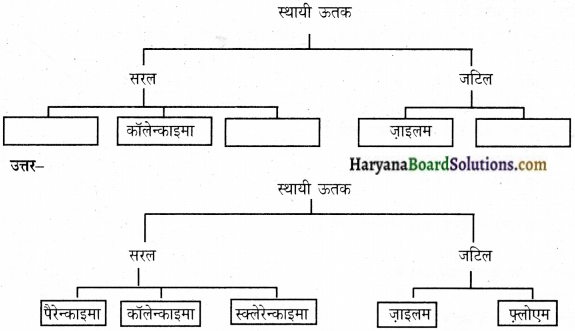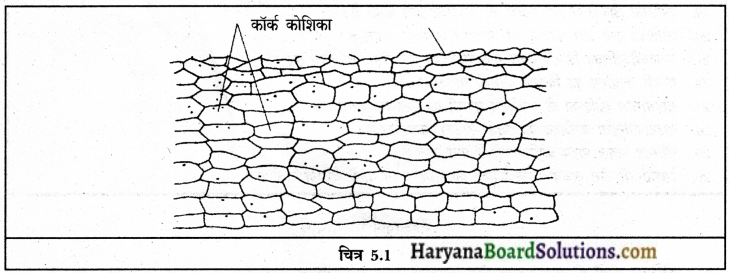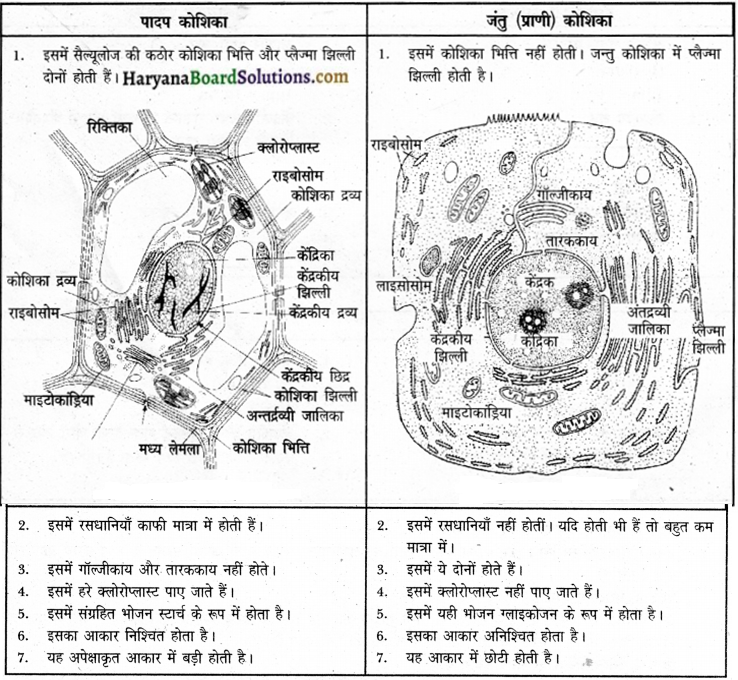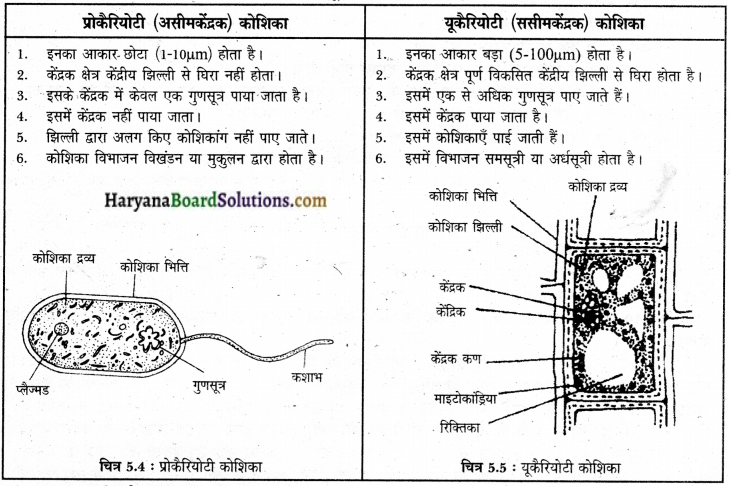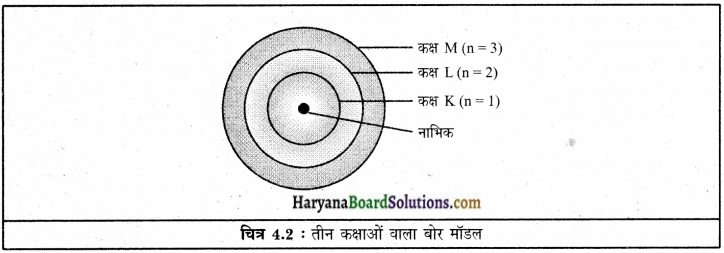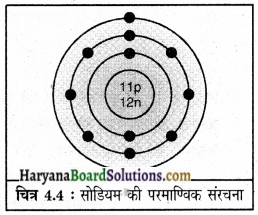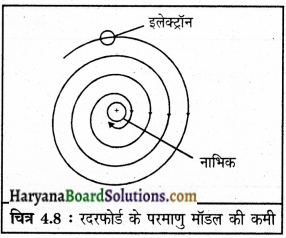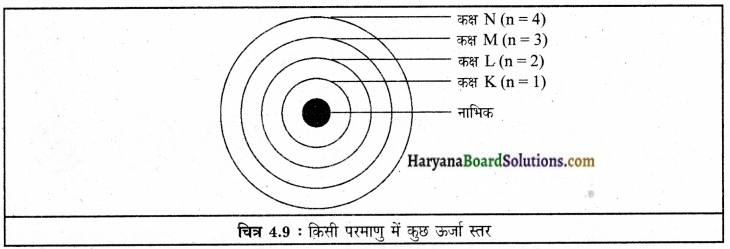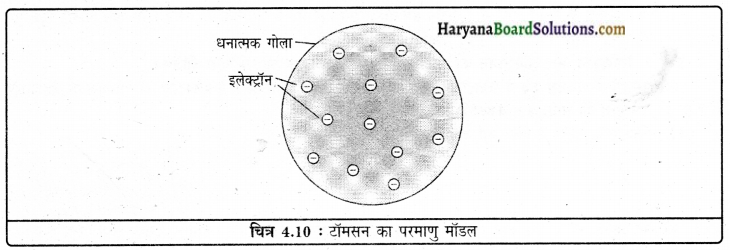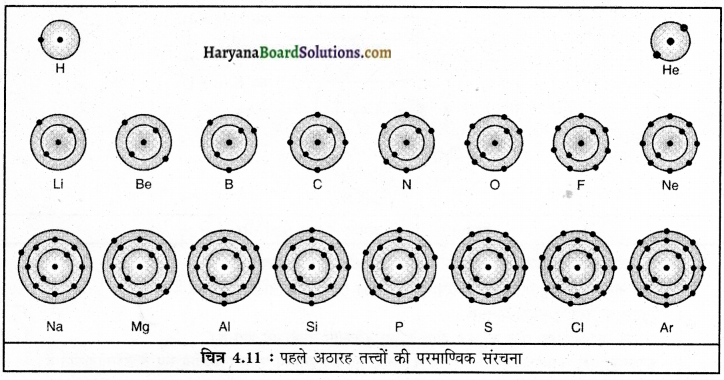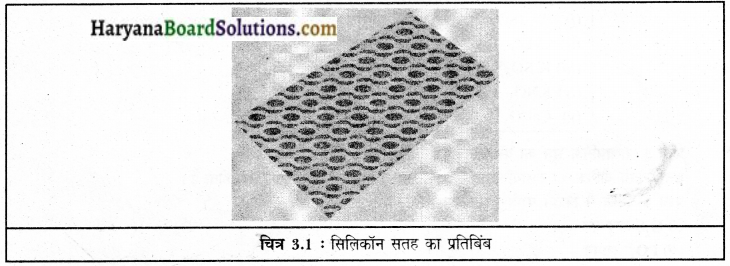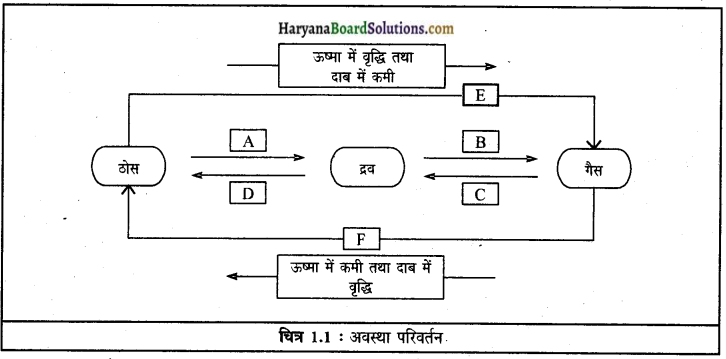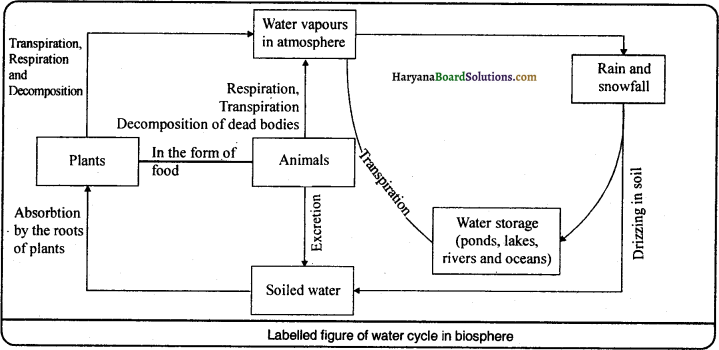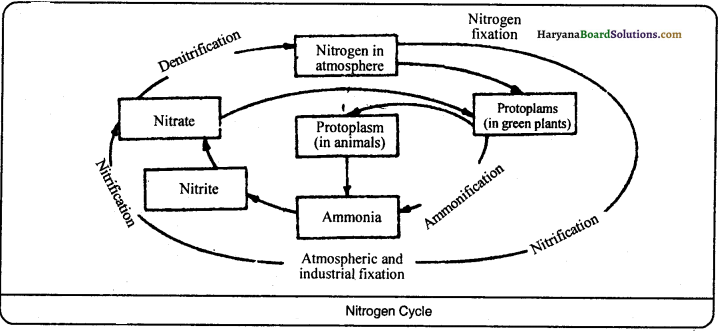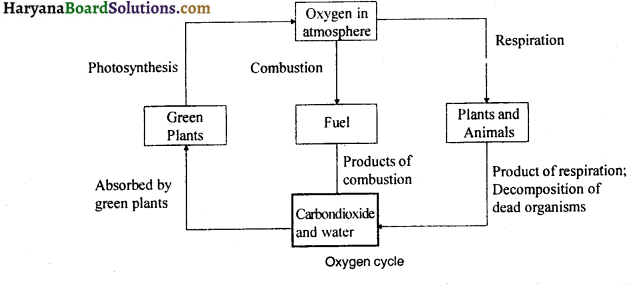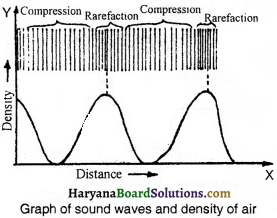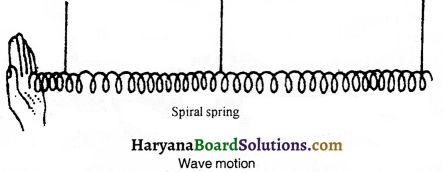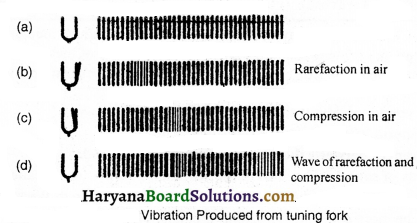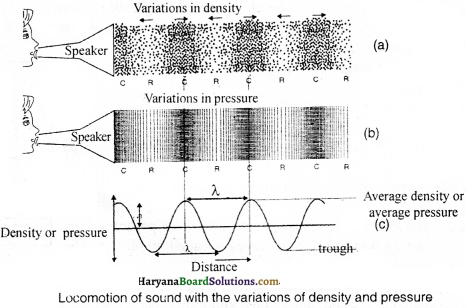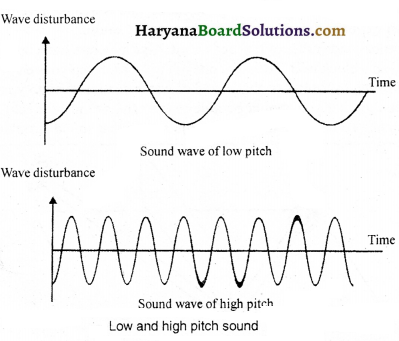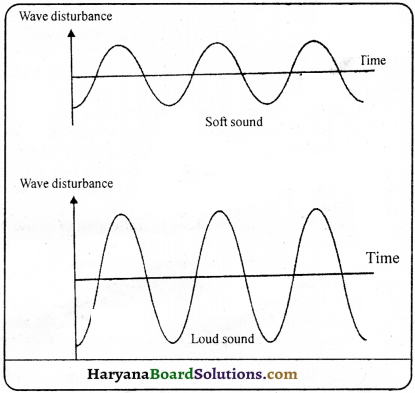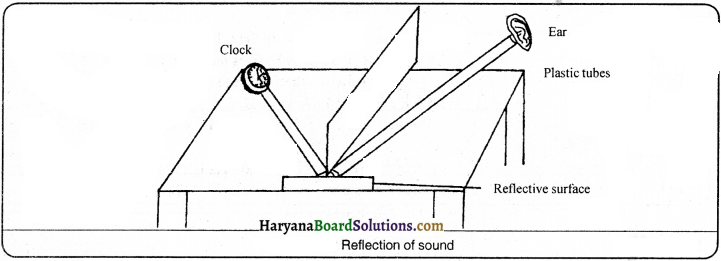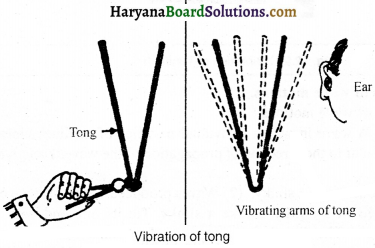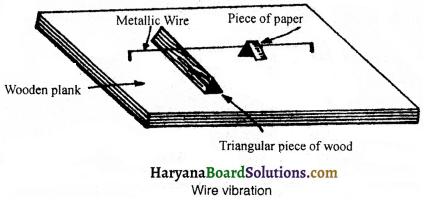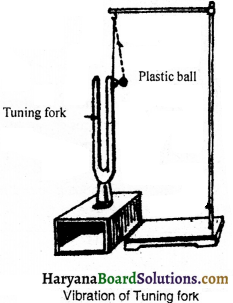Haryana State Board HBSE 9th Class Science Important Questions Chapter 15 Improvement in Food Resources Important Questions and Answers.
Haryana Board 9th Class Science Important Questions Chapter 15 Improvement in Food Resources
Very Short-Answer Type Questions
Question 1.
What are the main components of food?
Answer:
Protein, fat, vitamins, minerals, carbohydrates, etc.
Question 2.
Where from we get food?
Answer:
From plants and animals.
Question 3.
How the crop production increase?
Answer:
By green revolution.
Question 4.
What do you mean by white revolution ?
Answer:
Excess production of milk is called white revolution.
Question 5.
Which practices should be adopted in agriculture and animal husbandry ?
Answer:
Sustained system.

Question 6.
Write the main sources of carbohydrates.
Answer:
Wheat, maize, rice, barley, millets, etc.
Question 7.
From which products of plants do we get proteins ?
Answer:
Gram, pea, black gram, green gram, pigeon pea, lentil, etc.
Question 8.
Write the name of sources of fat.
Answer:
Soyabean, ground nut, mustard, sesame, linseed, castor, sunflower, etc. ‘
Question 9.
Where from we get vitamins and minerals ?
Answer:
Vegetables, spices, fruits, etc.
Question 10.
Write the names of fodder crops.
Answer:
Berseem, oat, sudan grass, maize, sorghum, etc.
Question 11.
On which factor growth of plants and flowering are dependent ?
Answer:
Growth of plants and flowering are dependent on sunlight.
Question 12.
In rainy season which crops are grown ?
Answer:
Kharif crops.
Question 13.
When rabi crops are grown ?
Answer:
In winter season.

Question 14.
Write the names of kharif crops.
Answer:
Paddy, maize, cotton, green gram, black gram, soyabean, pigeon pea, etc.
Question 15.
Which are the rabi crops ?
Answer:
Gram, pea, mustard, linseed, etc.
Question 16.
What is called crossing of crops ?
Answer:
Mating or crossing is being done of genetically different plants to improve the desirable characters of the crops, this is called crossing of
crops.
Question 17.
Which is the new technique for improved crops ?
Answer:
Higher yield varieties are prepared through introduction of genes of desirable characters into the – crops.
Question 18.
What is called high yielding ?
Answer:
To increase the production of crop per acre is called high yielding.
Question 19.
What is called biotic resistance ?
Answer:
Resistance from diseases, insects, etc., is called biotic resistance.
Question 20.
Write the names of the conditions for abiotic resistance.
Answer:
Drought, salinity, water logging, heat, cold and frost.

Question 21.
Is it advantageous or disadvantageous to decrease the maturity period of the crops ?
Answer:
Advantageous.
Question 22.
Why is it useful to grow the dwarf plants for cereals ?
Answer:
Because dwarf plants consume less nutrients.
Question 23.
Why do we need food ?
Answer:
For development, growth and to be healthy.
Question 24.
Where from plants get nutrients ?
Answer:
From air, water and soil.
Question 25.
How many macro-nutrients are in number ?
Answer:
6 (nitrogen, phosphorus, potassium, calcium, magnesium and sulphur).
Question 26.
How many micro-nutrients are in number ?
Answer:
7 (iron, manganese, boron, zinc, copper, molybdenum and chlorine).
Question 27.
How manure is prepared ?
Answer:
Manure is prepared by micro organisms from the decomposition of animal excreta and plant wastes, eradicated weeds, etc. ‘
Question 28.
Which main crops are grown for green manure ?
Answer:
Sun hemp, mung, gur are grown for green manure.

Question 29.
What are fertilizers ?
Answer:
Which nutritious matters are prepared by artificial methods for plants are called fertilizers.
Question 30.
Are fertilizers cheapest than bio-fertilizers ?
Answer:
No, these are costly.
Question 31.
Write one demerit of fertilizers.
Answer:
It causes water pollution.
Question 32.
Which is the main source of irrigation in India ?
Answer:
Rain.
Question 33.
Which causes much loss to rain-fed crops ?
Answer:
By drought.
Question 34.
How we get underground water ?
Answer:
By digging wells (tubewells).
Question 35.
Write one modern technique to increase the availability of water.
Answer:
By constructing small check dams.
Question 36.
What is called mixed cropping ?
Answer:
Growing of two or more crops simultaneously on the same field is called mixed cropping.

Question 37.
Write an example of mixed cropping.
Answer:
Wheat + gram, groundnut + sunflower.
Question 38.
What is called intercropping ? ,
Answer:
Growing of two or more crops simultaneously on the same field in a definite pattern is called intercropping.
Question 39.
Write an example of intercropping.
Answer:
Soyabean + maize (one row soyabean + one row maize). .
Question 40.
What is called crop rotation ?
Answer:
The growing of different crops on a piece of land in a pre-planned succession is known as crop rotation.
Question 41.
Write the names of weeds.
Answer:
Xanthium (gokhroo), Parthenium (gajar ghas), Cyperinus rotundus (motha), Chenopodium (bathua).
Question 42.
What are called insects ?
Answer:
The insects which cause loss to crops are called insects. %
Question 43.
What are called chemical which destroy weeds ?
Answer:
Weedicides (Weedkiller).
Question 44.
Write the biotic factors cause loss to foodgrains.
Answer:
Insects, rodents, fungi, bacteria, etc.
Question 45.
Write the names of abiotic factors cause degradation to foodgrains.
Answer:
Lack of appropriate temperature and moisture.
Question 46.
What is called animal husbandry ?
Answer:
Management of livestock is called animal husbandry. ”

Question 47.
Who are called draught animals ?
Answer:
Which ones are used for farm labour are called draught animals.
Question 48.
Write the names of two exotic or foreign breeds of cow.
Answer:
Jersey, brown swiss.
Question 49.
Write the names of two local breeds of cow.
Answer:
Red sindhi, sahiwal.
Question 50.
Which are called dairy animals ?
Answer:
Milk-producing female animals are called milch animals (dairy animals).
Question 51.
Write two names of external parasites of animals.
Answer:
Mites, lice.
Question 52.
Write the name of internal parasite of animals which effect liver ? –
Answer:
Liver-fluke.
Question 53.
What is called poultry farming ?
Answer:
Poultry farming is called to domesticate chickens, ducks, guinea-fowls and turkeys.
Question 54.
What is called layers ?
Answer:
Egg-producing chickens are called layers.

Question 55.
What is called broiler ?
Answer:
Broilers are called those chickens which are domesticated only for meat.
Question 56.
What is called fishery ?
Answer:
Domestication of fishes, prawns and molluscs for economic importance is called fishery.
Question 57.
Give example of saline water fishes.
Answer:
Cat fish, sardines and shark.
Question 58.
Write names of non-saline water fishes.
Answer:
Catla, rohu, mullets, millitus, pomphrets, tuna, bombayduck, etc.
Question 59.
Write the names of fishes which are cultured in sea-water.
Answer:
Mullets, bhetki, pearl spots, prawns, mussels, etc.
Question 60.
Which fishes are farmed in composite fish culture ?
Answer:
Catla, rohu, mrigal, common carp, etc.
Question 61.
What is the main problem of composite fish culture ?
Answer:
The major problem in composite fish culture is the lack of availability of good quality seed.
Question 62.
What is called bee-keeping ?
Answer:
Bee-keeping is called to get honey and wax.
Question 63.
Write the Indian variety of bee.
Answer:
Apis cerana indica.
Question 64.
Write two varieties of bee.
Answer:
Apis dorsata, Apis florae.
Question 65.
Write the name of Italian bee.
Answer:
Apis mellifera.
Short-Answer Type Questions
Question 1.
What are the functions of food ?
Answer:
All living organisms need food for their survival. Functions of food are as follows :
(1) Food provides us energy.
(2) Food is helpful in maintaining the damaged cells tissues and orgAnswer:
(3) Food is helpful for the body development as well as in reproduction.
(4) Food generates the disease resistance energy which saves us from the diseases.
Question 2.
Write the names of the various sources of food.
Answer:
Various sources of our food are as follows :
1. Plants: The main part of our food such as foodgrains, pulses, spices, oil seeds, fruits, vegetables, sugar, etc., all we get from plants. Plants are autotrophic as well as they provide food to animals.
2. Animals: Animals are dependent for their food on plants but these animals provide to other animals such as milk, meat, eggs, butter, ghee, etc.

Question 3.
Write the names of main constituents and sources of food.
Answer:
Following are the constituents and sources of food :
| Name of Components |
Sources |
| Carbohydrates |
For example; wheat, maize, millet, rice, sorghum, potato, etc. |
| Protein |
For example; pulses, lentil, black gram, gram, pigeon pea, green gram, etc. |
| Fat |
For example; soyabean, groundnut, sesame, castor, mustard, linseed, sunflower, etc. |
| Vitamins and minerals |
For example; vegetables, fruits, spices, etc. |
Question 4.
What do you mean by green revolution ?
Answer:
To generate agricultural production speedily is called green revolution. Green revolution has been successed by using higher quality seeds, pesticides, weedicides, fertilizers, modem techniques of irrigation, modern agricultural implements and modem agricultural equipments. The modem agricultural technique which is based on scientific researches has been reached to the farmers by intense agricultural technology. Consequently, there is a unique change in the field of agriculture which is known as green revolution.
Question 5.
What is the need of improvement in crop varieties ?
Answer:
Improvement in the crop varieties is needed due to following objectives :
(i) For high yielding.
(ii) For good quality.
(iii) To increase disease resistance efficiency in crops.
(iv) For pre-mature and uniform maturity.
(v) To increase photo and thermo insensitivity. .
(vi) For the improvement of desirable characters.
(vii) To increase the comprehensive adaptability in crops.
Question 6.
Which are the main water-air conditions required for various crops ?
Answer:
Water, soil, air and temperature are required for the exact growth and development of crops, but amongst these, two conditions are those by which growth of the crops, maturity of the crops and their life cycle are attached. These conditions are-temperature and photoperiod. Temperature is related to the maturity of the crops and photoperiod is related to the flowering and growth of the plants. Plants manufacture their food in photoperiod (sunlight) by the process of photosynthesis.
Question 7.
What do you know about kharif and rabi crops ?
Answer:
Following are seasonally based two types of crops :
(1) Kharif crops
(2) Rabi crops.
1. Kharif crops:
These crops are grown in summer season, especially June and July. These crops are required excess heat and water to be grown. In the very beginning of winter season, these are harvested.
Examples:
Maize, paddy, sorghum, millet, black gram, green gram, sesame, bottle gourd, squash gourd, ash gourd, lady finger, etc.
2. Rabi crops:
These crops are sown in winter season. These crops require less heat and water. These are harvested in the beginning of summer season.

Examples:
Wheat, pea, gram, mustard, carrot, radish, turnip, cauliflower, berseem, etc.
Question 8.
How varieties of plants can be improved ?
Answer:
Varities of plants can be improved by the following characteristics:
1. Selection of good quality seeds:
We should select those seeds to be sown which produce high yields and are disease, insect, and parasite resistants. Variety of plants will be improved by doing so continuously.
2. Good quality imported plants to be grown:
If local varieties produce less yield and are not to be improved, then good quality and high yielding plants should be brought from other countries, e.g., Tui Chug Native -1 rice and Sonara – 64 wheat are brought from foreign countries.
3. Hybridisation:
In crossing technique, the cross-pollination is done in two varieties which are having desirable genes. All the useful characteristics are present in both of the varieties in the cross which we receive after crossing. Many of the good varieties of fruits and vegetables have been introduced by this technique. G-57 and G-67 have been introduced are the improved varieties of cotton.
4. Byindured mutations:
It is that technique in which high temperature, special rays or by chemical substances such changes are brought in the genes of plants that there are desired characters in the produced genes.
Question 9.
Mainly in how many parts the agricultural techniques are divided ?
Answer:
Mainly agricultural techniques are divided into three parts :
(i) Selection of seeds.
(ii) Management of crops.
(iii) Protection of grown crops in the fields and to save the harvested crop.
Question 10.
What is the contribution of improved varieties in higher yield ?
Answer:
To increase the productivity of fhe crop per acre’is caiied’hig’her yieid.Tiigner yielding varieties of crops are meant for :
(i) They should be disease resistant.
(ii) They should be favourable to climate, land and fertilizers.
(iii) They should be of high yielding capacity.
(iv) Should be of high quality for management.
On the basis of above facts criteria can be called as higher yields.
Question 11.
What are the benefits of short maturity period of crops ?
Answer:
From the time of sowing of crops upto the time of harvesting or crop production is called maturity duration. From economical point of view, maturity duration is best, because short duration also reduces the cost of crop production and both the time and labour of the farmer are saved and crop production is got early.
Question 12.
How is it useful to develop the varieties of wider adaptability ?
Answer:
There are different environmental conditions are found in our country, i.e., some part is hot and in other part is cold climate. In coastal areas, there is similar climate. Hence, in these different climatic areas, different varieties of crops can be grown. So, now efforts are being made that varieties with wider adaptability may be developed because one kind of variety can be grown in wider areas.
By doing so, it will help in stabilising the crop production. One variety can then be possible to grow under different climatic conditions in different areas.

Question 13.
What do you know about the required nutrients for the growth and development of green plants ?
Answer:
At least thirteen nutrients are required for the general growth and development of green plants, which are called nutrients. Nutrients on the basis of required quantity of plants are of two types :
1. Macro-nutrients:
Such nutrients which are required by the plants in large quantities are called macro-nutrients, e.g., nitrogen, potassium, calcium, magnesium, phosphorus and sulphur. These are six in number.
2. Micro-nutrients:
Such nutrients which are required by the plants in small quantities are called micro-nutrients, e.g., iron, zinc, copper, boron, molybdenum, chlorine, manganese. These are seven in number. Plants get carbon and oxygen from air and hydrogen and oxygen from water in kind of nutrients. Above given 13 nutrients plants get from soil.
Question 14.
What are called fertilizers ? Mainly how many kinds of fertilizers are there ?
Answer:
To maintain the fertile efficiency of land, some particular substances are to be mixed in it. These particular substances, which maintain the efficiency of land are called fertilizers. There are the two types of fertilizers :
1. Manures:
These are prepared by the remains of animals, their excreta, and other waste material. In manures, green manure, compost manure, and dung manure are the main manures.
2. Fertilizers:
Which manures are prepared artificially, called fertilizers. These are mainly of three types : nitrogen, phosphorus and potassium, fertilizers. These are called chemical fertilizers.
Question 15.
What are called fertilizers and manure ? Write their differences.
Answer:
Fertilizers: Fertilizers are those chemical substances which contain required nutrients for plants. These are mainly inorganic compounds.
Manure: It is a natural substance. These are made from the decomposition of wastes of plants and animals. These are mainly organic substances.
Following are the differences between fertilizers and manures :
| Fertilizers |
Manures |
| 1. These are prepared by natural substances. |
1. These are prepared by natural substances. |
| 2. These are enriched with nutrients. |
2. These are less enriched with nutrients. |
| 3. These are not helpful in composition of the soil. |
3. These make the soil. |
| 4. These are mainly non-carbonic substances. |
4. These are mainly carbonic substances. |
| 5. These cover large area, so these are uneasy to be store and transport. |
5. These cover large area, so these are uneasy to be store and transport |
| 6. These are required in less quantities. |
6. These are required in large quantities. |
| 7. Manure is prepared by the help of micro-organisms. |
7. Manure is prepared by the help of micro-organisms. |
| 8. These effect at a time. |
8. These effect gradually. |
| 9. Fertilizers cause soil pollution. |
9.Manures do not cause soil pollution. |
Question 16.
What do you mean by compost manure ?
Answer:
Compost manure is prepared by waste plants, dead animals and animal excreta. To prepare compost manure, first of all a trench is dug and a layer of the animal and plant remains is spread. This layer is covered with soil layer so that the remains could be saved from air and light and it may remain moisten. A layer of plant waste or mixed refuse is spread over soil. Micro-organisms present in the trench decompose the biotic remains and change them in a useful manure which is called compost manure. Compost prepared by using earthworms is called vermi-compost.

Question 17.
What is called green manure ?
Answer:
Prior to the sowing of the crop seeds, sun hemp, green gram, sorghum are grown. When these are grown upto 1\(\frac {1}{2}\) – 2 ft., then they are mulched by ploughing them into the soil and field is filled with water, so that the green plants may convert into manure after decomposition which is called green manure, which helps to increase the fertile efficiency after mixing in soil with quantity of nitrogen and phosphorus.
Question 18.
Fertilizers is a necessary evil. How ?
Answer:
Beeding the decreased fertility ofthe land, it has become necessary to use the fertilizers in land because manures are not available in the demanded quantity. Use of fertilizers is also harmful because fertilizers are flowed away with the irrigative water and mix in water resources which cause water pollution. Continuous use of fertilizers in an area decreases the fertility of the soil because the organic matter in the soil is not replenished and the life cycle ofthe micro-organisms is hampered. Yielding of good crop production in shortterm by using fertilizers is . possible, but after a period of time they cause loss to the soil. Hence, fertilizers is a necessary evil.
Question 19.
What are the benefits by utilising manure ?
Answer:
By utilising manure following are the benefits:
(i) These provide nutrients to soil.
(ii) These increase the quantity of organic substance in the soil.
(iii) Micro-organisms in the soil get food from organic manures which are helpful to provide nutrients to the plants.
(iv) Organic fertilizers are helpful to stabilize the moisture content in the soil.
(v) Use of manures is beneficial to the fertility of the land. Land does not become barren.
Question 20.
Selection of fertilizers is done due to the requirement of the land and crop while for manures it is not so, why ?
Answer:
Every fertilizer has any of the macro-nutrient in itself. It is necessary to be noted that which nutrient is lack of in the land. It is only to be known after the testing of soil. Secondly, the requirement for the nutrients is not same for every type of crop. For example, cereal crops, i.e., nitrogen is required in large quantity for wheat while bean-plants i.e., pulses require nitrogen in lesser quantity. Hence, selection of fertilizers is done due to the requirement of the crop and land. Secondly, manure contains nutrients in lesser quantity. It contains biotic matters in large quantity. Use of manure in excess quantity causes no loss while unwanted use of fertilizers cause lose rather than profit.

Question 21.
Write a brief note on organic farming.
Answer:
Organic farming means that only organic matters are used to get agriculture production. In this farming, fertilizers, herbicides, pesticides, etc. are not used rather maximum of organic manures are used to fulfil the loss of nutrients and to increase the fertility of the land. Blue green algae in preparation of fertilizers, neem leaves in grain storage used turmeric as bio-pesticides. Production can be increased by destroying insects, weeds with the use of mixed cropping, intercropping and crop rotation.
Question 22.
What do you meant by irrigation ? Which methods are adopted in our country for irrigation ?
Answer:
To fulfil the requirement of water in different steps for the growth, development and maturity of the crops is called irrigation.
Resources of irrigation: Canals, wells, tubewells, ponds, rivers, rain, fountains, etc.
Question 23.
Why irrigation is done to crops by us ? Explain.
Answer:
Following are the reasons to irrigate crops or plants :
(i) Plants absorb mineral salts from the land in liquid form which is possible only by irrigation. Various fertilizers are also given in liquid form.
(ii) Plants get two nutrients H and O from water which are essential for the growth and development of the plants.
(iii) Water is available only by irrigation for the growth and development of the plants. Plants completes its metabolic activites through water.
(iv) Plants get lost water due to the activity of vaporisation. To maintain the water balance exactly, plants get water only by irrigation.
(v) In dry soil seeds are not germinated.
Question 24.
What are the resources of irrigation ?
Answer:
Resources of irrigation are as under:
1. Tanks: In rocky areas, rain water is collected in tanks is used for irrigation purposes. Irrigation through tank is an old method.
2. Canals: Canals are started from rivers and irrigate the areas on their way.
3. Wells: Wells are dug in land and water is collected from water bearing strata for irrigation.
4. Tubewells: Tubewells are the best source of irrigation. Irrigation can be done by collecting water-bearing stroata. Now a days, fountains are also modem resources of irrigation. Rains are uncertain. Therefore, requirement of water to crops is done by other irrigation resources. In the past time in Punjab irrigation was being done by dug wells, i.e., with Persian wheel.
5. River lift systems: Lift system is used to regularise the flow of water in canals. Water is directly drawn from the rivers lift system due to inadequate water in the reservoirs to irrigate the fields close to rivers.
Question 25.
What measure is taken to increase the groundwater level ?
Answer:
There is decrease in water level by continuous utilising of ground water. Water is collected by constructing check-dams to increase the water level. After mixing with ground water, this water increases the water level. Water culture is also possible by planting trees on free land.
Question 26.
What is called mixed cropping ?
Answer:
Growing of two or more crops simultaneously on the same piece of land is called mixed cropping, for example :
(i) Wheat + gram
(ii) Wheat + mustard
(iii) Groundnut + sunflower
(iv) Cotton + green gram
(v) Barley + gram.

Question 27.
What are the advantages of mixed farming ?
Answer:
The advantages of mixed farming are as under :
(i) Production expenses are less in mixed cropping because expenses which are to be made on one crop, yields can be got on the same expenses for more than one crop.
(ii) Fertility of the land is stabilised by mixed cropping because generally pulses crops are grown with cereal crops.
(iii) Farmer’s income increases by getting yield of more than one crop at a time.
(iv) Yields are increased when advantage of crop protection reach to all the matured crops in the field.
(v) Insects in the land can be destroyed by mixed cropping.
(vi) Weeds are also destroyed by mixed cropping.
(vii) There is no risk of failure of the crop by this technique. For example; if one crop is lost due to failure of rains, then we can get the next crop.
Question 28.
What is called intercropping ? Also write the examples.
Answer:
Growing of two or more crops simultaneously on the same field in a definite pattern is called
intercropping. In few rows of one crop alternate with a few rows of a second crop are grown,
for example:
(i) Soyabean + maize
(ii) Finger millet + cowpea.
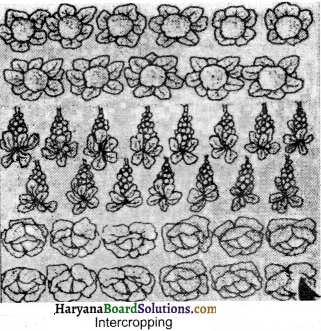
Question 29.
Write advantages of intercropping system.
Answer:
Following are the advantages of intercropping system :
(i) Different seeds of different crops are not mixed in this system.
(ii) Required, different ratio of fertilizers can be provided to the crops.
(iii) It is easy to spray required pesticides on the crops.
(iv) Harvesting of both of the crops can be done separately.
(v) Yields of both of the crops can be obtained separately.
(vi) By adopting this system, yield can be increased.
(vii) To sow the crops in different rows is possible.
Question 30.
What is crop rotation ? What are its advantages ?
Answer:
The growing of different crops in a field in a pre-planned succession is known as crop rotation. If in a field, one crop is sown repetitively, then there is lack of some particular nutrients in the land by which fertility of the land decreases. For example; cereal crops require nitrogenous elements in large quantities for their growth.
If cereals will be sown repetitively, then nitrogenous elements will running decreased and the land will become barren. But once if we sow cereal crop and secondly we sow some legume crop, then content of nitrogen in land will increase because there are some glands in the roots of legume crops in which some microbes (to which plant observes) live, which change the free nitrogen of air into nitrates. By this, nitrogen exceeds in the land and land remains fertile.
Following are the advantages of crop rotation:
(i) There is no decrease of particular nutrient in the land.
(ii) No need to provide fertilizers time to time.
(iii) Harmful toxins to crops do not germinate.
(iv) Various types of weeds are destroyed by themselves.
(v) Fertility of the land remains stable.

Question 31.
What is intercropping ? How is it different from mixed cropping ?
Answer:
Intercropping : Growing of two or more crops simultaneously on the same field in a definite pattern is called intercropping. For example; groundnut and sunflower can be grown by the technique of intercropping.
Following are the differences between mixed cropping and intercropping:
| Mixed Cropping |
Intercropping |
| 1. This decreases the loss of crop in the field. |
1. This increases the productivity of the field. |
| 2. Use of pesticides is difficult. |
2. Use of insecticides is easy. |
| 3. In this rows are not in proper succession. |
3. In this rows are in a proper succession. |
| 4. In this seeds are mixed before sowing. |
4. In this seeds are not mixed before sowing. |
| 5. In this cultivation and threshing of crops are difficult. |
5. In this cultivation and threshing of crops are being done easily. |
| 6. Yields are obtained in kind of mixture. |
6. In this crop yields are gathered separately. |
| 7. In this fertilizers are not required. |
7. In this fertilizers are used as per requirement. |
Question 32.
What losses are caused due to repetitively growing of crops of one family ?
Answer:
Following are the losses due to repetitively growing of crops of one family :
(i) Diseases and insect are increased in the field.
(ii) Various types of weeds are increased in the field.
(iii) Particular type of nutrients are decreased in the field.
(iv) Yield of production is decreased.
(v) Threat of the failure of the crop increases.
(vi) Only one yield can be obtained.
Question 33.
What are called weeds ? By giving examples write some traits to eradicate them.
Answer:
Those plants which we do not grow ourselves, but those which are grown along with crop in the field automatically, are called weeds. They cover unwanted space in the field and compete with crop plants for water, soil nutrients and sunlight. Generally, according to the conditions, any plant may be weed, but with the crops of paddy and wheat, commonly growing weeds are : convolvulus (Hirankhuri), Sorghum (Jangli oat), grass, Amaranthus (Chaulai) and Chenopodium (Bathua) etc. Weeds like Amaranthus (Chaulai) is commonly grown with every crop.
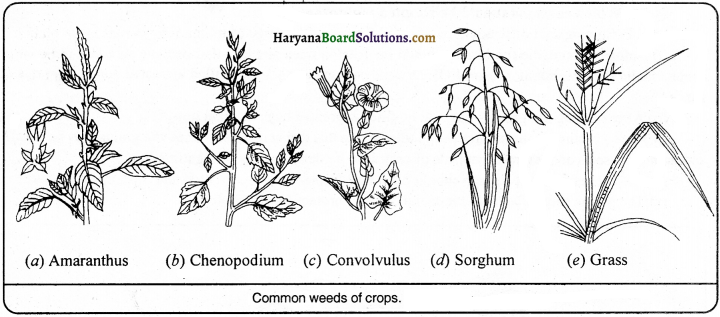
Traits to eradicate: Following are the traits to eradicate weeds :
(i) If the weeds are less in number, then by hand hoeing or with ‘khurpi’ they are uprooted.
(ii) While ploughing, these too can be uprooted.
(iii) If the weeds are large in number, then weedicides or herbicides are sprayed. These chemicals destroy them without causing any loss to the crop. Some weedicides are : 2, 4 – D, M.P.C.A. and butachlore etc.
(iv) In this system, to destroy the weeds, help of insects or micro-organisms is obtained, e.g., coboneal insect destroys opentia weed. Weeds can also be destoryed by adopting mixed cropping, intercropping and crop rotation.
Question 34.
What is called crop protection ? Why is it required ?
Answer:
To protect the crops from microbe diseases, mould diseases, insects and other pests is called crop protection. If the crop protection is not practised, then a great loss is caused to farm yields, e.g., cereals, fruits, vegetables and other products. Therefore, it is very necessary to provide protection to the crops grown in fields from insect, pests and diseases which cause harm to the crops. By doing not so, producer has to bear a huge loss.

Question 35.
Why weeds are to be uprooted ?
Answer:
The weeds are uprooted from the crops because weeds or unwanted plants get their food, water and nutrients supplied to plants by which crop yield can be decreased. Therefore, for higher yielding, weeds are removed from crops so as to supply the water and essential nutrients to crops in sufficient amount and to get higher yield. ,
Question 36.
In how many ways insect-pests attack to the plants ?
Answer:
Insect-pests attack to the plants in three ways and cause harm, e.g.,
(i) They cut the root, stem and leaf.
(ii) They suck the cell rap from various parts of the plant.
(iii) They bore into stem and fruits and cause harm to them.
Question 37.
Explain the advantages and disadvantages by using pesticides.
Answer:
Advantages: Growth in agriculture yield has increased by using pesticides.
Disadvantages:
(i) By using these, useful micro-organisms are also killed along with harmful insects.
(ii) The environment is being polluted by these pesticides.
(iii) By using these, content of underground nitrate and phosphate increases and water turns contaminated. This water is unable to drink.
Question 38.
Which cautions should be adopted for storage of grains ?
Answer:
Following cautions should be adopted for the safe storage of grains :
(i) Before storage, the foodgrains should be dried in open sun heat and become sure that the moisture content in the grains is not more than 14%. Dry and cool grains should be filled in treated gunny bags or grain silage.
(ii) After cooling the grains, it should be filled in treated bags or grain pots.
(iii) The structure of the storage pot should be like this that at different times, the grains may be checked and harmful insects and micro-organisms of crop may be destroyed by fumigation.
(iv) It is beneficial that storage should be in moistureless, well-ventilated and neat, clean rooms.
(v) The grains should be stored in metal tanks to protect from rats etc.

Question 39.
How can the Insects controlled in stored foodgrains ?
Answer:
There are many methods to decrease the number of insects and microbes in stored foodgrains.
Control of insects: The following measures should be adopted to control the insects:
1. Sprays: Before storage the grains in godowns, it is more suitable to spray the godown to make free from insects and pests. Malathion and pyrethrum are common examples of insecticides.
2. Fumigation: The fumigation system is favourable to control the number of insects at the time of storage of grains. This is a volalite chemical which is evaporated with in short time and this destroyed the insects without affecting the grains.
Examples: Ethylene dibromide (E.D.B.) and aluminium phosphide.

Question 40.
Write the definition of animal husbandry.
Answer:
Animal husbandry : That branch of agriculture science is called animal husbandry in which the study of cattle farming, food, breeding, their shelters and protection from diseases is done. To improve the variety of animals is the main task in animal husbandry. The main objective of animal husbandry is to earn higher income and to make animals more useful to man.
Question 41.
What should be provided to bovine animals in fodder ?
Answer:
In the fodder of bovine animals, green fodder, chaff, dry grass, tiptia fodder, bran, peels of gram and oil-cake etc., should be provided. Mostly bovine animals are vegetarian. To some milk-producing bovine animals, the mixture of binula, methi, brassica chuca, gur. etc. is given.
Question 42.
What is called domestication ? Write any four names of domestic animals.
Answer:
When the necessities of animals, e.g., food, shelter, protection, health, etc., are filled by the man and also living in this environment, these animals make the descendantal growth by breeding is called domestication.
Name of domestic animals:
(i) Cow
(ii) Buffalo
(iii) Horse
(iv) Dog.

Question 43.
By which remedies production of food from animal sources can be increased ?
Answer:
Especially the food products obtained from animals are milk and meat. Production of these food yields can be increased by breeding. For example; indigenous cow gives approximately 6-8 liters of milk everyday while hybrid variety of cow approximately gives 60 liters of milk everyday. By improvement of the animal breed food yield can be increased. Furthermore, by giving balanced diet and neat and clean shelters to animals is advantageous to increase the yield. Yield decreases due to animals. Therefore, with disease-free animals, yield increases.
Question 44.
What are called lactation period and dry period ?
Answer:
Lactation period: In milk producing animals, the period of milk production (after the birth of a calf) is called lactation period.
Dry Period: In milk producing animals, when they do not produce milk, i.e. upto the time of birth of a calf is called dry period.
Question 45.
What are the characteristics of a good animal shed ?
Answer:
In animal husbandry, animal shed is considered very important. Following characteristics are necessary :
(i) The shed should be spacious and well-ventilated.
(ii) The shed should be moisture-free. This should be clean and lighted.
(iii) It is necessary to manage the disposal of animal waste (urine and dung).
(iv) The shed should be protective from summer, hot, storm, rain, etc.
(v) The shed should be pollution-free.
(vi) Proper water-supply facility should be there.
(vii) It should be safe from the predators in poultry farming.
Question 46.
Which are the indigenous milk producing cows in our country ?
Answer:
Indigenous milk producing cows mainly are of three types :
1. Red Sindhi: The cow is red in colour with dark and light red shades and is of medium in size.
2. Sahivval: This breed is superior in comparison to other milk producing cows. This cow is large in size and heavier.
3. Gir: This breed is the main breed of jungles of Gir in Gujarat. These cows are medium in size and fairly good milk yielders. Daugi, Devni, Tharparkar and Hariana are dual purposes cows which are high milk yielders.

Question 47.
In our country which are the selected exotic breeds of cows for cross breeding ?
Answer:
In our country, following are the exotic breeds of cows which are used in cross-breeding :
1. Jersey: This cow is the main breed of Island of Jersey (U.S.A.).
2. Holstein Friesia: This breed is mainly of Holland.
3. Brown Swiss: This is the dual purpose breed from Switzerland.

Question 48.
Which are improved breeds of cows developed by NDRI, Karnal ?
Answer:
In our country, improved breeds of dairy cows have been developed at the National Dairy Research Institute (NDRI), Karnal, Haryana. Some successfid cross-breeds are:
1. Karan Swiss: This breed developed as cross between Brown Swiss and Sahiwal.
2. Karan Fries: This has been developed by a cross between Tharparkar and Holstein-Friesian.
3. Frieswal: This breed has been developed by a cross between Holstein-Friesian and Sahiwal. These new cross breeds give two to three times more milk than our indigenous breeds.

Question 49.
Write the name of high milk yielder breeds of buffalo. Write her milk yielding capacity.
Answer:
Variety ofbuffalo with high yield ofmilk is Murrah which produces milk yield 2500 litres in comparison to indigenous breeds of 1800 litres in her each lactation period. Furthermore, high milk yield varieties are : Jafarabadi, Nagpuri, Surti.
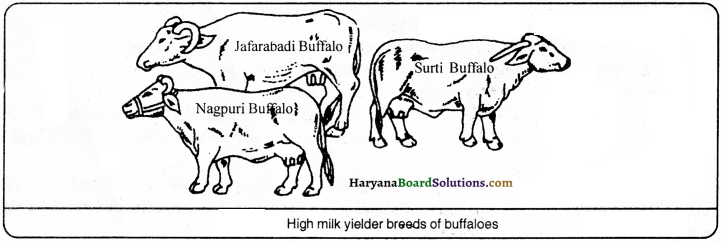
Question 50.
What is called roughage ? How animals obtain it ?
Answer:
Commonly animal food contains : fibrous, coarse and low nutrient context grass which is called roughage. Animals obtain roughage in kind of green grass, berseem, rijka and hay.
Question 51.
How does animal feeding affect the milk production in dairy animals ?
Answer:
In dairy animals, animal feeding affects the milk production and opposite to it, their feeding depends upon the quantity of milk yield. More nutritious feed is given to high yield animal. Milk yield will decrease if the animal is given low nutritious feed. Milk yielding animals are given fibrous, wheat bran, rice bran, low nutritious grass and green fodder, in kind of concentrates, granular cereals, pulses, gram, finger millet, sesame, oil seed cakes, cotton seeds are given. Milk production can be increased approximately three times by giving nutritious feeding to milk producing animals.
Question 52.
Differentiate between roughage and concentrates in relation to feeding of animals.
Answer: Just like persons of various factors such as age, health and nature of work require different types of foods (from view point of nutrition) in the same way animals also require different types of nutritious feeding for their growth etc. In common feeding of animals, there is fibrous, granular, grass of low nutrients, etc., which is called roughage and having one or more nutrients is called concentrated particle. Examples of concentrated particle feeding : cotton seeds, sesame, oil seed cakes and gram etc.
Question 53.
Write some preventive measures for animal diseases.
Answer:
Preventive measures for animal diseases are as under:
(i) Animals should be kept at neat and clean space.
(ii) Compulsory vaccination may be given.
(iii) Provide balanced feeding to animals.
(iv) Space should be provided for proper cleaning of animal body.
(v) It is compulsory to check the animals properly for diseases.
(vi) Dead animals and animal excreta (urine and dung) should be disposed properly.

Question 54.
Write the symptoms of sick animal.
Answer:
(i) Animal limps or moves slowly.
(ii) Animal becomes less active and looks tired.
(iii) Skin becomes dry and there is no shining on it.
(iv) He looses appetite (stops eating).
(v) His ears look withered.
(vi) Feels difficulty to respire.
(vii) Animal passes loose or extremely fowled dung.
(viii) Nature of animal becomes irritated.
Question 55.
Write the names of any two parasitic and infectious animal diseases.
Answer:
1. Parasitic diseases: Diseases caused by parasites are called parasitic diseases, e.g., cholera (in hens), diarrhoea (in chickens), anthrax (animals and birds), rinderpest (in animals).
2. Infectious Diseases: Diseases caused by pathogens are called infectious diseases or communicable diseases, e.g., cowpox (in cow and buffalo), salmonellosis (sheep-goat), foot and mouth disease (in bovine animals).
Question 56.
Why poultry farming is done ?
Answer:
Mostly poultry farming is done to produce layers for eggs and broilers for meat. The feathers of the chickens are also useful. Weight of cock approximately is 4 to 5 kg and of hen is 3 to 4 kg.
Question 57.
Why there is difference in the diet of broilers and layers ?
Answer:
Layers are farmed for eggs. Therefore, in the diet of layers, grains of wheat, and dry fish in large quantity are given. While broilers are farmed for meat. In the diet of broilers, protein, fat, vitamins A and K are given in large quantity.
Question 58.
Explain the exotic breeds of chicken which are used in our country.
Answer:
Following are the exotic breeds which are used in our country :
1. White leghorn: It is the popular breed which produces long white eggs. It is most popular breed because it has small body size and therefore, needs less feed for its maintenance.
2. Rhode Island Red: This breed has been developed on the farm of Rhode Island in U.S.A. It is a dual type of breed. It is a fairly good egg layer and also meat yielding (broiler).
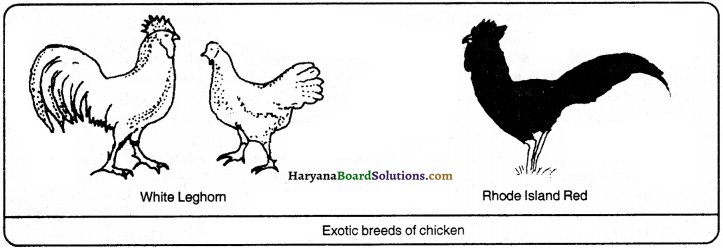
Question 59.
Write the names of indigenous, exotic and cross-breeds of chickens.
Answer:
Following are the explanation of indigenous, exotic and cross-breeds of chickens :
1. Indigenous breeds: Aseel, Busra, Chitagang, Dhagus.
2. Exotic breeds: White leghorn, Rhode Island, Plymouth Rock, Australope.
3. Cross-breeds: HH-260, IBL-80, B-77.

Question 60.
What preventive measures should be adopted in the management of chicks ?
Answer:
Following are the preventive measures in the management of chicks :
(i) Spacious land is required for chicks. With overcrowding their growth decreases.
(ii) Layers require enough space and light. Light intensity and its duration has positive effect on the egg laying output of the hens.
(iii) Proper feed should be provided to hens. The chick feed should be highly enriched with vitamins A and K. Protein and fat should be in the feed of broiler.
(iv) Chickens require their regular cleanliness.
(v) Vaccination should be done well in time to prevent communicative diseases.
Question 61.
How useful are the new breeds of chicks in comparison to indigenous breeds ? Explain with example.
Answer:
New breeds of chick require less feed and meat yielding in high quantity e.g., the new breed requires only 2 kg feed to lay 12 eggs, while indigenous breed requires 6 kg feed for this.

Question 62.
Where fishes are found ?
Answer:
Fishes are found in saline and non-saline water resources. Non-saline water resources are ponds lagoons and rivers, while saline water is of ocean. People of coastal areas use saline water fish and other aquatic foods. People of Land area use non-saline water fish in their food. Catla, rohu, mullet, etc. are non-saline water fish and teena, shark and cod are sea water fish. In our country 16 lakh hectare inland space and 7500 km long coast line is sufficient for fish yielding.
Question 63.
How do we take fish as food ?
Answer:
Fish dried in fresh form, making pickies and in tin packing, position are used. Marine fishes are captured in large quantity. Therefore, they are preserved by drying, by making pickles or by other techniques.
Question 64.
What is called fisheries ?
Answer:
Domestication of fishes on a large scale and their management is called fisheries. To get eggs of fish, from chatching eggs to obtain young ones (seeds), domestication of fish in proper number in a proper water resource (living), to provide proper feeding, in tanks with sutficient oxygen and light, proper number of fish seeds are to be domesticated and to obtain the yield from them are included in fisheries.
Question 65.
What is called composite fish culture ? What is the cause for no competition in food in this culture ?
Answer:
In a paddy field or in a single fishpond, a combination of five or six fish species are domesticated. It is called composite fish culture. In this culture, these species do not compete for food because catla is a surface feeder, rohu is a column feeder, mrigal and carp are bottom feeders, while grass corp feed on aquatic weeds. In this way, there is no competition in food and in this culture, fish yielding highly increases.
Question 66.
What is the one problem in composite fish culture ?
Answer:
One problem with such composite fish culture is that many of these fish, breed only during monsoon, because of this, good quality seeds are not available. Therefore, fish culture is impossible.
Question 67.
Write a note on bee-keeping.
Answer:
The practice of rearing honeybees is also called silent rearing. Honeybees are reared in artificial wooden hives to get honey. For reared honeybees, box type beehives are prepared, in which a number of sliding vertical frames are fixed in the honey chambers made of thin wax layer. Reared honeybees make the honey from nectar of flowers and fill in these chambers. Now this honey is abstracted with the help of a machine.
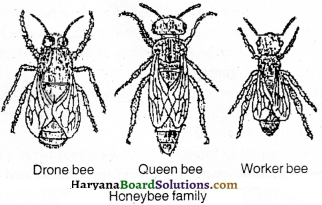
Question 68.
What are the uses of honeybees ?
Answer:
Following are the uses of honeybees:
(i) Honey is obtained from bees. Honey is a nutritious food and is antibiotic substance.
(ii) Wax is also obtained from bees. Wax is also used in preparation of medicines.
(iii) Honeybees also help in cross-pollination by which yield of plants is also increased. Yielding of flowers increases in particular gardens.
(iv) Bee-keeping is an additional income generating activity of farmers.
Question 69.
Which varieties of honeybee are reared on commercial basis ?
Answer:
Following are the varieties of reared honeybees:
(i) Apis cerana indica (Indian bee)
(ii) Apis dorsata (the rock-bee)
(iii) Apis florea (little bpe)
(iv) Apis mellifera (Italian bee)
All the above facts varieties are reared for the yield of honey and wax. Honeybees also increase the yield of all fields and gardens. Their rearing place is called honey-garden or honeybee-farm.

Essay Type Questions
Question 1.
Which irrigation systems are being adopted in India ?
Answer:
Following are the irrigation systems which are adopted in India :
1. Canal System: In canal system, canal receive water reservoirs or rivers. The main canal is divided into branch canals. From these distributaries carry water to the fields. Irrigation by canals, makes the sufficient supply to the fields.
2. Tank System: Small storage reservoirs are called tanks. Water of catchment areas is collected in tanks. Overflow of water is regulated as per its availability in the tanks. Irrigation by tanks is done only in South India.
3. Wells: In those areas where groundwater is available, wells are constructed there. There are two types of wells : dug wells and tube wells. In a dug well, water is utilised from water bearing strata. Water for irrigation from these wells is lifted by mechanical devices such as by Persian wheel.
4. Tubewells: Water is lifted by diesel or electrical pumps from deeper strata. Irrigation by tubewells is a perfect irrigation system.
5. River valley system: Rain water by rivers is used for irrigation in Karnataka and Western ghats in Kerala. In these areas, steep and narrow riverine valleys make available water to the perennial crops such as coconut, rubber, coffee, tapoca, etc. A single crop of rice is grown on the bottom land.
6. River lift system: River lift system is used to make availability of water in canals due to insufficient reservoir release. By lift system on rivers, water is being carried to the canals.
Question 2.
What is need of improvement to bring in crop varieties ? Explain the objectives of improvement in crop varieties.
Answer:
Need of improvement in crop varieties : Ever increasing human and animal population has put more demands for foodgrains, fodder crops, fibre, oil and sugar etc., but due to limited land resources, this increasing need is only possible by increasing the productivity of crops. Therefore, this increasing demand is fulfilled by crop improvement, i.e. variety improvement.
Objectives of improvement in crop varieties:
(i) Variety improvement is required to get high yielding.
(ii) It is required to get high quality yielding, such as content of protein in pulses, quality of preservation in fruits and vegetables, quality of oil in oil seeds, etc.
(iii) Variety improvement is required to improve the disease resistance capacity.
(iv) Variety improvement is required for early and uniform maturity and to develop characters in long duration crops.
(v) The character of photo and thermo-insensitivity in crops can be developed by crop variety improvement. Development of crop varieties insensitive to these factors help in cultivation of these crops in wider areas.
(vi) Desirable agronomic traits, such as: height in fodder crops, character of excess germination, dwarf character in some paddy crops, character of sweetness in fruits, etc., can be developed by variety improvement.
(vii) By developing varieties of wider adaptability, in different agroclimatic conditions, stability can be brought in crop production.

Question 3.
What is manure ? How many types are of manure ? Explain in detail.
Answer:
Some particular substances are to be added in land to maintain the continuous fertility of the land. To these particular substances which complete the lack of nutrients in land is called manure. Mainly, following are the two types of manure :
(1) Organic manure
(2) Inorganic manure
1. Organic manure: This manure is prepared by the remains of living organisms and plant waste, waste material like livestock excreta (urine and dung), etc. This manure is of three kinds :
(i) Dung manure: This manure is prepared by the decomposition of animal dung. This manure contains sufficient quantity of nutrients.
(ii) Compost manure: This manure is prepared by plant waste, straw, domestic waste, eraticated articles, etc., by decomposing them in pits.
(iii) Green manure: Some small plants growing in the Field are mulched by ploughing into the soil and after their decomposition which manure is prepared is called green manure.
2. Inorganic manure: These manures are prepared artificially. These are also called fertilizers. These are also of three types :
(!) Nitrogen fertilizers: These are those fertilizers which provide nitrogenous elements to the soil such as urea, ammonia, sulphate, etc.
(if) Phosphate fertilizers: These are those fertilizers which provide phosphorus elements to the soil such as super phosphate; etc.
(Hi) Potassium fertilizers: These are those fertilizers which provide potassium elements to the soil such as potassium sulphate, potassium chlorate, etc.
Question 4.
What do you mean by green revolution ? Write its advantages.
Answer:
Highest yielding of food production in between 1960 and 1980 in our country is known as green revolution. In this session, due to higher crop yield and food production, India became self dependent in the matter of foodstuffs and achieved success in making sufficient safe storage of foodgrains (buffer stock). Therefore, this session is also known as golden time. Green revolution begins with the development of high yield variety (HYV) of wheat in which a new high yield variety was developed by the breed of traditional and maxican variety.
Advantages of Green Revolution:
(i) Our country became self dependent in food production.
(ii) Collected a sufficient safe storage (buffer stock) of foodgrains.
(iii) Easily faced the situations such as draught with sufficient safe storage.
(iv) Green revolution changed the living standard of farmers as their income increased.
Padam Vibhushan Prof. M.S. Swaminathan is considered as the creator of green revolution in India, by this reason Dr. Swaminathan was awarded as the father of Economic Ecology in United Nations Environment Programme. After green revolution, now the second green revolution is expected.

Question 5.
Write a note on poultry farming.
Answer:
In this farming chickens, ducks, guinea-fowls and turkeys are included but mostly chickens are domesticated. Its both indigenous and exotic varieties are available in India.
1. Indigenous breeds: Aseel and Balsara are the two varieties of our indigenous hens. Following are their characteristics :
(i) These are small in size
(ii) Their growth is less
(iii) These lays small eggs.
(iv) These are healthy,
(v) They are used for meat purposes
(vi) Their natural resistance capacity is high.
2. Exotic breeds:
White leghorn and Rhode Island Red are the main breeds. Following are their characteristics :
(i) They are large in size
(ii) Their growth is early
(iii) They lay eggs in large quantity
(iv) Size of their eggs is large
(v) Disease resistance capacity is less.
3. New breeds: These are obtained by the cross of indigenous and exotic breeds. Main breeds are IL S-82, B-77. Following are their characteristics:
(f) They have both the exotic and indigenous breed characters
(ii) Their production capacity is approx. 200 eggs per bird per year
(iii) They require less feeding
(iv) Meat yield is excess in them.
Feed (ration): Their feed contains, grains, mashed cereals, rice bran and water etc. Due to little belly they take feed many a times in a day. Eggs, meat, manure and wealth are earned by poultry farming.

Question 6.
Write a brief note on fish farming.
Answer:
Fish farming:
Fish is an aquatic animal and a rich source of protein. Their production comes under underwater agriculture. In our country, 16 lakh hectare inland water area and 7500 km long coastline is sufficient for fish yielding.
On the basis of living place, fish are of following types :
(i) Non-saline or fresh water fish.
(ii) Saline or marine fish.
(iii) Brackish water fish.
1. Non-saline or freshwater fish: Non-saline fish are found in ponds, rivers, lakes and waterfalls. In these main fish are : catla, rohu, mrigal, silver carp and grass carp etc. In catla, growth is very fast.
2. Marine fish: Fishes are found in large number in sea and saline water and these fish are considered main high valued food. In marine fishes main are: ribon fish, cate fish, sardine, shark, hilsa, fladage fish, etc.
3. Brackish fish: These are found in water collected by waves. Pearlsthot and mullet are its examples. Enemies of fish : Water beetles, water-bugs, frogs, snakes and birds, etc., are the enemies of small and
large fish.
Diseases of fish: Main factors of diseases in fish are parasites and pathogens. IPN (Infectious Pancreatic Necrosis) and VHS (Viral Haemorrhagic Septicemia) are main viral diseases. Huge loss is caused to fish yielding due to water pollution. Small and large scale fish-farms are available to fish farmers throughout the country to increase the fish yield.
Practical Work
Experiment 1.
To make a herbarium of cereals, pulses, oil seeds and identify the seasons of their sowing and harvesting.
Work-Method:
With the help of your parents make a herbarium of different seeds and collect the information from the village farmer about the sowing and harvesting of these seeds.
| Name of Seed |
Time of Sowing |
Time of Harvesting |
| Paddy |
June-July |
October |
| Maize |
June-July |
October |
| Green gram |
June-July |
October |
| Soyabean |
June-July |
October |
| Wheat |
October-November |
April-May |
| Gram |
October-November |
March-April |
| Sarson |
October-November |
March-April |
Quick Review of the Chapter
1. We get food from:
(A) animals
(B) only plants
(C) plants and animals both
(D) grainaries
Answer:
(C) plants and animals both
2. For crops the number of essential nutrients is:
(A) 6
(B) 7
(C) 8
(D) 13
Answer:
(D) 13
3. The number of macro-nutrients is:
(A) 6
(B) 7
(C) 13
(D) 3
Answer:
(A) 6

4. The number of micro-nutrients is:
(A) 6
(B) 7
(C) 13
(D) 3
Answer:
(B) 7
5. With decomposition of plants the prepared manure is :
(A) compost fertiliser
(B) vermi-compost
(C) green manure
(D) chemical fertiliser
Answer:
(C) green manure
6. The honey bee prepares honey from:
(A) fruits
(B) nectar
(C) pollens
(D) nectar and pollens both
Answer:
(D) nectar and pollens both
7. Which of following is the dwarf animal ?
(A) goat
(B) sheep
(C) camel
(D) lion
Answer:
(C) camel
8. Sudan is a crop of:
(A) paddy
(B) fodder (sorghum)
(C) vegetable
(D) condiment
Answer:
(B) fodder (sorghum)
9. The crop of kharif is :
(A) soyabean
(B) linseed
(C) mustard
(D) peas
Answer:
(A) soyabean
’10. Which is not a rabi crop ?
(A) linseed
(B) mustard
(C) peas
(D) black gram
Answer:
(D) black gram

11. The local breed of broiler is:
(A) frog
(B) tiger
(C) grasshopper
(D) shark
Answer:
(A) frog
12. Italian honey bee is:
(A) Apis serena
(B) Apis dorsetta
(C) Apis malifera
(D) Apis flory
Answer:
(C) Apis malifera
13. Non-saline (freshwater) fish is:
(A) prawn
(B) tuna
(C) mussel
(D) pearl-spot
Answer:
(B) tuna
14. Cause of soil pollution is:
(A) composite fertiliser
(B) dung manure
(C) inorganic fertiliser
(D) vermi-compost
Answer:
(C) inorganic fertiliser
15. In carbonic agriculture which is used is:
(A) organic fertilisers
(B) chemical fertilisers
(C) pesticides
(D) weedicides
Answer:
(A) organic fertilisers
16. The selected exotic breeds of cows for sankar reproduction in our country are
(A) Sahiwal
(B) Karan Fries
(C) Frieswal
(D) Brown Swiss
Answer:
(D) Brown Swiss

17. Which is not a breed of buffalo?
(A) Gir
(B) Zafarabadi
(C) Nagpuri
(D) Surti
Answer:
(A) Gir
18. Average weight of a cock used to be between 4-5 kg, whereas the weight ola hen is:
(A) 2-3kg
(B) 3-4kg
(C) 5 – 6 kg
(D) none of these
Answer:
(B) 3 – 4 kg
19. Which is not an exotic breed of cock (rooster)?
(A) IBL-80
(B) Astralop
(C) White leghorn
(D) Plymouth rock
Answer:
(A)IBL-80
20. Fish, surviving on water weed ¡s:
(A) Grasscorp
(B) Corp
(C) Catla
(D) Rohu
Answer:
(A) Grasscorp
21. The superior egg laying breed is:
(A) HH-260
(B) B-77
(C) ILS – 82
(D) White leghorn
Answer:
(A) HR – 260
22. Murrah is the superior breed of:
(A) cow
(B) buffalo
(C) sheep
(D) goat
Answer:
(B) buffalo
23. In Vhich of the following carbon is present? [H.B.
(A) Protein
(B) Carbohydrate
(C) Lipid
(D) All of these
Answer:
(D) All of these
24. The present population of India is:
(A) less than one billion
(B) more than 121 crores
(C) one billion
(D) all of the above
Answer:
(B) more than 121 crores

25. The reason of crop production is:
(A) green revolution
(B) white revolution
(C) blue revolution
(D) mass revolution
Answer:
(A) green revolution
26. Substance(s) which provide fodder is/are:
(A) berseem
(B) oats
(C) maize
(D) all of the above
Answer:
(D) all of the above
27. On which factor are flowering and development dependent in plants?
(A) irrigation
(B) seeds
(C) fertilisers
(D) sunlight
Answer:
(D) sunlight
28. In which season are the crops of kharif grown?
(A) in rainy season
(B) in summer season
(C) in spring season
(D) in winter season
Answer:
(A) in rainy season
29. Photoperiod related to:
(A) light of moon
(B) electric light
(C) light of glow-worm
(D) sunlight
Answer:
(D) sunlight
30. Plants get mineral elements from :
(A) air
(B) water
(C) soil
(D) all of the above
Answer:
(C) soil

31. Nutritious chemicals produced by artificial method for plants are called :
(A) manure
(B) fertiliser
(C) compost manure
(D) none of the above
Answer:
(B) fertiliser
32. Dwarf breed of plants is good for:
(A) sugarcane
(B) pulses
(C) fodder
(D) cereals
Answer:
(D) cereals
33. How many nutrients are provided to plants by air and water?
(A) 6
(B) 7
(C) 13
(D) 3
Answer:
(D) 3
34. Plants get from water:
(A) nitrogen and oxygen
(B) oxygen and hydrogen
(C) carbon and oxygen
(D) all of the above
Answer:
(B) oxygen and hydrogen
35. Growing two or more crops in definite row patterns is known as .
(A) high cropping
(B) intercropping
(C) crop rotation
(D) hybridisation
Answer:
(B) intercropping
36. Example of intercropping is:
(A) soyabean and maize
(B) wheat and gram
(C) groundnut and sunflower
(D) wheat and potato
Answer:
(A) soyabean and maize
37. Sowing of crops in the field alternatively, is called:
(A) intercropping
(B) mixed cropping
(C) crop rotation
(D) hybridisation
Answer:
(C) crop rotation

38. Main weed is:
(A) gokhroo (xanthium)
(B) gajar ghas (parthenium)
(C) motha (cyperinus rotundus)
(D) all of the above
Answer:
(D) all of the above
39. Milk giving animals are called :
(A) draught animals
(B) dairy animals
(C) general animals
(D) all of the above
Answer:
(B) dairy animals
40. The external parasite of animals is:
(A) sparrow
(B) crow
(C) vulture
(D) louse
Answer:
(D) louse
41. To get wax and honey, there is:
(A) poultry farming
(B) bee keeping
(C) animal husbandry
(D) fish farming
Answer:
(B) bee keeping
42. Farming of hen, duck and swan, is called:
(A) poultry farming
(B) bee keeping
(C) animal husbandry
(D) fish farming
Answer:
(A) poultry farming
43. Farming of fish, prawns and molluscs for economic importance, is called:
(A) poultry farming
(B) bee keeping
(C) animal farming
(D) fish farming
Answer:
(D) tish farming

44. Which of the following is not a method of crop improvement?
(A) Improvement in variety of crops
(B) Management of crop produce
(C) Management of crop protection
(D) Excess use of fertilizer
Answer:
(D) Excess use of fertilizer
45. Which of the following is a shell fish ?
(A) Prawn
(B) Mullet
(C) Bhetki
(D) Pearispot
Answer:
(A) Prawn
46. Which of these is enriched in protein:
(A) Black gram
(B) Gram
(C) Peas
(D) All of the above
Answer:
(D) All of the above
![]()
![]()
![]()
![]()

![]()

![]()
